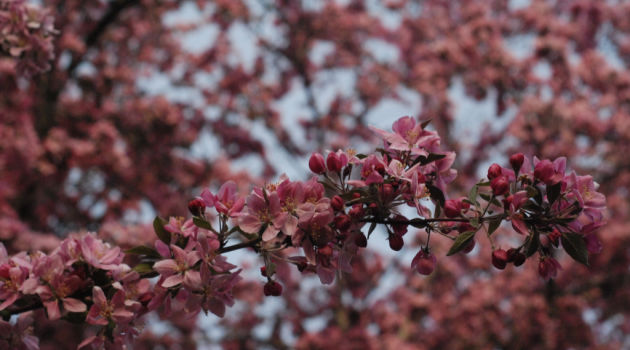If you’re looking for beautiful ornamental trees to plant in your garden, there are many to choose from, though you must find one that matches the sun exposure, soil conditions, and water needs that work best with your yard.
These trees can last decades if taken care of properly, so make sure they are more than just an aesthetic choice!
Table of contents
Eleven Stunning Ornamental Trees to Plant in Your Yard
Here are the eleven ornamental trees you can try growing:
#1 – Chestnut Tree
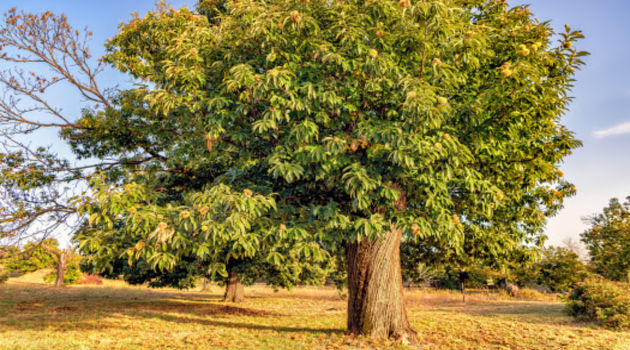
Chestnut trees are a great addition to any yard as long as you are willing to care for them. They can grow up to 100 feet high in optimal conditions, so they need plenty of room for growth.
When properly cared for, these trees can live for up to 100 years. Chestnut trees grow well in most environments, thriving in zones 3 through 8.
They do best in moist, slightly acidic soils that are rich in organic matter. It will also do best if the area is at least partially shady.
These trees are sensitive to drought conditions. Therefore, look for one that does well with the amount of water your garden receives.
Plant your tree from April through June, in an area with plenty of space (at least 30 square feet—in all directions) to accommodate their large root system, so the tree doesn’t stunt.
Note: Never plant the tree at the bottom of a sloppy area. If possible, plant it at the top of the slope instead—to make drainage of the excess water easier, thus preventing the roots from becoming soggy.
- Best for USDA Growing Zones: 3-8
- Sun Exposure: Full sun, part sun
- Soil Needs: Rich, moist, and well-draining
- Soil pH: 4.5-6.5
- Maturity Size: Up to 100 feet high, although most will top out around 70 feet
#2 – Ornamental Cherry Trees
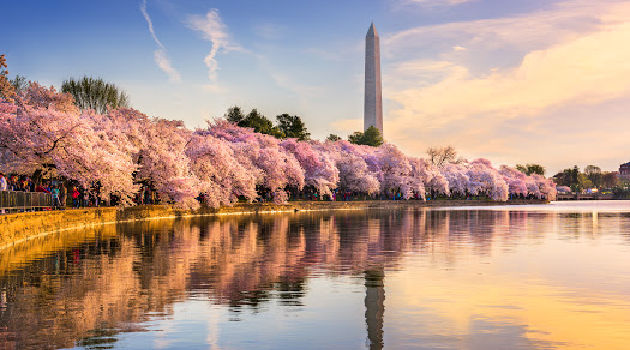
In spring, this tree will produce clusters of white flowers with five petals each and are highly fragrant. Once the blooms fade, they will leave behind either red or black fruit, depending on the variety you choose.
The black cherries tend to have a sour or bitter taste, while the red ones are best eaten fresh off the tree.
Like many other cherry trees, this type of ornamental tree is very susceptible to diseases and pests. So care should be taken when planting it in your yard. It will do best in areas with a large amount of sun exposure and moist, rich soil with lots of organic material.
Large amounts of water are needed by the tree, but excessive watering should be avoided.
Plant in early fall, so the tree has plenty of time to become established before winter arrives.
Be sure to keep the area around the trunk clear of weeds and plants for enhanced ventilation, which will help prevent disease. Ornamental cherry trees do not have a very deep root system, so there is not as much risk of them damaging your property if you plant one near a sidewalk or driveway.
Finally, you want to treat them for worms and other pests periodically throughout the year, considering their susceptibility to insect damage.
- USDA Growing Zones: 4-7
- Sun Exposure: Full sun
- Soil Needs: Deep, moist, well-drained, rich soil
- Soil pH: Slightly acidic to neutral
- Maturity Size: 20-30 feet tall
#3 – Dogwood trees
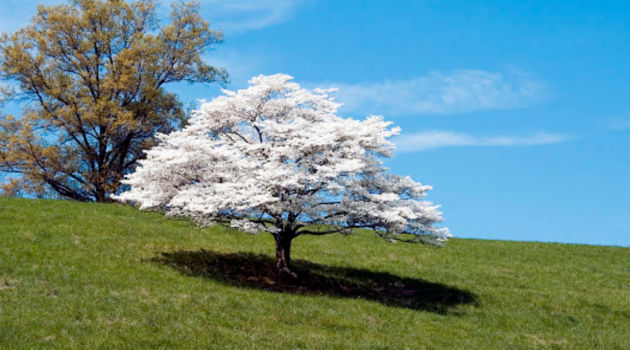
This is another great option if you’re up for beautiful ornamental trees with plenty of colorful blooms and fruit.
Dogwood tree’s spring blossoms appear as a cluster of white or pink petals surrounding the baby green leaves.
These trees become covered in red or purple fruits, which turn black once they are fully ripe.
They are extremely hardy and can be found growing in many different climates throughout the world, but they do best when planted in areas that have a large amount of sun exposure combined with well-drained soil and plenty of space for their roots to grow.
If possible, amend your soil with plenty of organic material such as compost or manure—to boost growth.
Plant in early spring, so the tree has ample time to become established before winter arrives.
It does not have a very deep root system. Therefore, no need to worry about breaking up your sidewalk or driveway by planting one near it.
As the cherry trees, dogwoods are prone to insect damage, so consider treating the trunk and leaves periodically throughout the year.
- USDA Growing Zones: 3-8
- Sun Exposure: Partial sun
- Soil Needs: moist, nutrient-rich, well-drained
- Soil pH: 5.5-6.0
- Maturity Size: 20-30 feet
#4 – Eastern Redbud
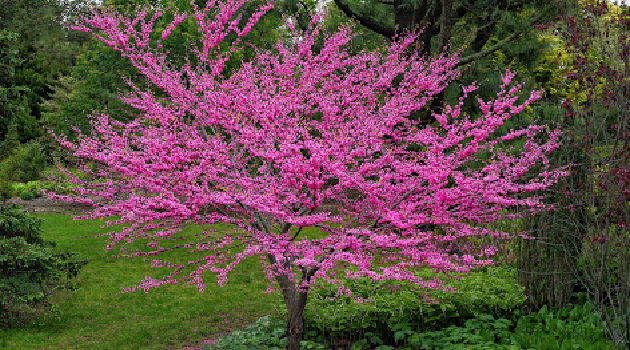
Eastern Redbud trees are native to the Eastern United States, but they have been planted in many different areas of North America because of how beautiful and unique they are.
These small trees only grow from 5 to 10 feet tall, so they make a great addition to your yard if you do not have very much space available.
They prefer full sun and well-drained soil but can also be planted in partial shade areas as long as the area is not overly wet.
It’s best to plant these trees during early spring so that they become established before winter arrives.
The flowers are usually pink or purple with white surrounding them, but you can also find white blooms surrounding a pink or purple center.
Before planting, be sure to amend the soil with plenty of organic materials (such as compost and manure) to offer the necessary nutrients.
If you don’t have enough time to plant during the early spring months, you should still prepare the soil but wait until summer to plant.
- USDA Growing Zones: 4-8
- Sun Exposure: Full sun to partial shade
- Soil Needs: well-drained
- Soil pH: 6.6-7.8 (neutral to slightly alkaline)
- Maturity Size: 5-10 feet tall
#5 – Japanese Maple (one of the most popular of all ornamental trees!)
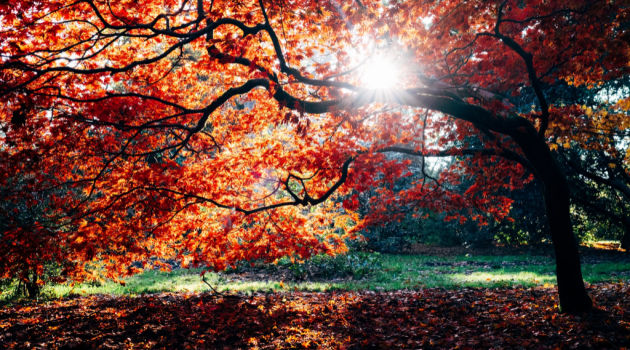
Japanese maple trees are a trendy choice because of how beautiful they look covered in the spring blossoms that emerge in clusters.
The flowers range from white, pink, and purple, and some of them even have a red ring around the white or pink center.
The leaves appear as small, dark green tablets with jagged edges surrounding them.
These trees are extremely hardy and can easily adapt to various growing conditions, so they are a great choice for anyone looking to add some variety to their yard.
However, you want to give your Japanese maples a good start by working in manure or compost into the soil when planting.
Water regularly so the soil stays moist. Also, consider mulching—to help even further with soil moisture regulation.
Until your tree(s) is well-established, be sure to irrigate it whenever the top inch of the soil feels dry, especially on dry days.
The best time to plant Japanese maples is in autumn—at least four weeks before the ground freezes. No worries if you plant late; your Japanese maple will wait patiently until the spring season to begin settling into the new home.
Fertilize in late winter or early spring after the tree turns a year old. Feed again in summer if need be.
- USDA Growing Zones: 5-9 (but a few cultivars will survive zone 4)
- Sun Exposure: Filtered sun, partial shade
- Soil Needs: moist, well-drained
- Soil pH: Slightly acidic
- Maturity Size: 10-25 feet tall
#6 – Bradford Pear Trees

These awesome ornamental trees exhibit large, shiny green, saw blade-shaped leaves, and produce white flowers in the early spring months.
Their pears grow in bunches from the tree’s branches, which, though not particularly ornamental, is food for the wild birds.
The downside to planting one of these trees is that they do not grow enormous, so you will need to plant a number of them or plant a larger variety if you want more shade.
They also have an unpleasant characteristic smell that intensifies in the spring and summer.
Plant your Bradford pear trees in a spacious location—away from homes, structures, or utility lines—because their branches tend to get brittle and can break off in harsh weather conditions.
Ensure the soil is loose and that it drains well.
Water the trees regularly, even though they will tolerate short drought periods.
Plant in a location shielded from strong winds.
Also, heavily prune annually, so the canopy stays as thin as possible. Most likely, the tree won’t last beyond 15-25 years.
- USDA Growing Zones: 5-9
- Sun Exposure: Full sun
- Soil Needs: deep, moist, well-drained
- Soil pH: 5.0-7.5
- Maturity Size: 50 feet tall, 35 feet wide
#7 – Tiger Eyes Sumac
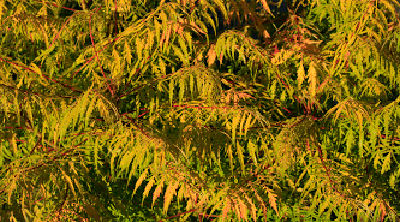
The Tiger Eye Sumac Tree has a beautiful shade of red (the color of its fruits) with yellowish-green blooms that will add some good color to your yard.
The plants are quite popular for their unique growth appearance, featuring wide leaves that grow up to 12 inches long and fruits that grow in clusters—almost resembling grapes on a vine.
Although a moderate grower (spreading by suckers), you can expect it to reach up to 10 feet in height and about 15 feet in width when fully mature.
These ornamental trees are excellent for planting around your house as they aren’t afraid to take on even the most polluted areas. They’ll thrive in places where other trees wouldn’t survive.
A well-draining, moderately fertile soil is all they need. Consider growing in a full-sun site for the best autumn color.
Sow the seeds (in a seedbed) in autumn or root cuttings in the winter and separate suckers when the plant is dormant.
- USDA Growing Zones: 3-8
- Sun Exposure: Full to part sun
- Soil Needs: well-draining, moderately fertile, medium moisture
- Soil pH: 4.6-6.0
- Maturity Size: 10-15 feet tall, 15-30 feet wide
- Bloom Season: Late spring to early in the summer
#8 – Japanese Willow
The Japanese Willow tree is a prevalent choice because of how hardy it is.
It’s a fast grower and prefers wet or constantly moist soils in a full-sun location. Japanese willow is among the few ornamental trees with quite insignificant blooms, often appearing as catkins.
The plant is particularly known for its nice stem and foliage color, variegated with three colors in spring—green, white, and shades of pink—paving the way for green and white in summer. The tree’s red branches offer a nice winter color, just like those on red-twig dogwood.
The plant forms an attractive arched shape; however, you need to regularly prune it–to enjoy the tri-colored leaves and the red stems.
Water adequately and regularly during the spring months so that the soil stays moist for longer periods; twice weekly in dry periods.
Applying a thick layer of mulch in dryer soils will also help with soil moisture retention.
Feed with compost or a general-purpose balanced fertilizer in spring—just around the plant’s base. No additional feeding is required.
Propagation of Japanese willows is mainly through stem cuttings.
- USDA Growing Zones: 5-7
- Sun Exposure: Full sun/part shade
- Soil Needs: Fertile, moist, well-drained
- Soil pH: 5.6 and 7.8
- Maturity Size: 4-6 feet tall, 5-7 feet wide
- Bloom Season: Early spring
#9 – Crepe Myrtle
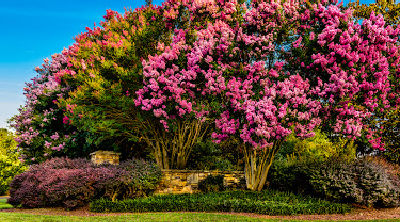
Crepe myrtles are loved in the southern landscapes for their beautiful summer blooms, attractive peeling bark, and very minimal maintenance needs.
Generally, they’re easy to grow in the right location—USDA hardiness zones 7-9; some even survive zone 6.
Crepe myrtles are adaptable to most soils except soggy soils. Therefore, they won’t necessarily require soil amendment (with compost) before planting.
However, you want to ensure the soil is well-draining and in a fully sun-lit location, so you have plenty and healthy summer blooms. It will also help to keep pests away.
Though mostly drought-tolerant, be sure to water the newly planted trees thoroughly until well established. Only fertilize when the blooms appear limited.
Select a smaller cultivar if you have limited space—to avoid the temptation of over-pruning.
Crepe myrtles are prone to powdery mildew and sooty mold, both of which you can easily treat with an organic spray like neem oil or insecticidal soap.
- USDA Growing Zones: 7-9
- Sun Exposure: Full sun
- Soil Needs: well-drained, not soggy
- Soil pH: 5.0-6.5
- Maturity Size: 10-30 feet tall, 15-25 feet wide (depending on the cultivar)
- Bloom Season: Summer
#10 – Magnolia
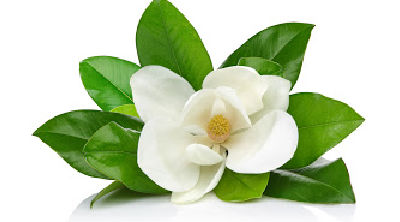
These attractive trees feature glossy dark green foliage, and some large exotic-like pod unfolds in fall to reveal orange-red berries, a favorite of wildlife, especially birds.
Depending on the species, magnolia trees can be classified as evergreen, deciduous, or semi-evergreen.
The majority of the deciduous type bloom early in the spring, just before the plant leaves out.
In late spring or autumn, planting is best in a rich, moist, slightly acidic soil—amended with leaf mold or compost.
Magnolia is among the few ornamental trees that will accommodate wet soggy soils, and so you want to choose it if you have wet growing conditions.
Feed with a slow-release fertilizer when the flower buds start swelling in spring.
Limit pruning to only after the tree is done flowering.
- USDA Growing Zones: 7-9
- Sun Exposure: Full sun to part shade
- Soil Needs: rich, moist, slightly acidic
- Soil pH: 5.0-6.0
- Maturity Size: 40-80 feet tall, 30-40 feet wide
- Bloom Season: Between February and June (going by the cultivar)
#11 – Crabapple
With over thirty flowering species, crabapple trees are among the most prevalent ornamental trees in the United States, highly prized for their fragrant, delicate spring flowers.
The tree is also known for its tiny tart fruits in a wide range of colors, making it a favorite of wildlife and pollinators.
Plant crabapples in spring or fall in well-draining soil with full sun exposure.
When planting, make sure to gently loosen the root ball before placing it in your already dug hole—which should be twice the size of the root ball. Add coffee grounds or peat moss to the soil to make it slightly acidic. After planting, irrigate deeply. Maintain regular watering until the plant establishes.
Prune regularly to encourage good ventilation.
- USDA Growing Zones: 4-8
- Sun Exposure: Full sun
- Soil Needs: Rich, moist, well-draining
- Soil pH: Prefers slightly acidic, but acidic, neutral, and alkaline will still do.
- Maturity Size: 10-40 feet tall
- Bloom Season: Late spring
Know Your Growing Zone Before You Plant Ornamental Trees
Do you know your USDA growing zone? Before you invest in this addition to your yard, you must determine if a particular species will flourish in your area. Use the interactive map below to decide if any of these trees will work well for you.

The Takeaway: Ornamental Trees Can Serve as a Centerpiece for Your Yard
The best ornamental trees to plant in your garden are the ones that will grow well in your area. And the first step to finding a tree that will thrive is by knowing the climate of your area. If you live in an area with four seasons, it’s important to find a tree that does well in this environment.
It makes sense to plant something that will provide beauty and shade during those warmer months when you need them most!

